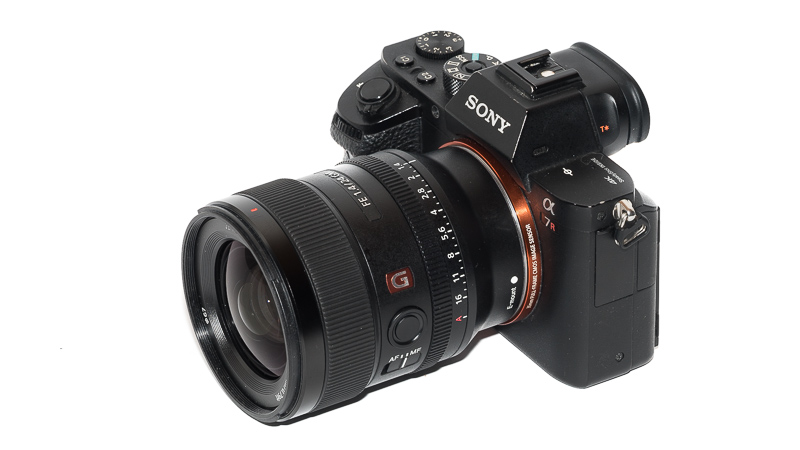
The FE 24mm 1.4 GM is a lens that Bastian, David and Jannik preordered the lens based on the spectacular specs: It is significantly lighter and smaller than competing lenses and affordable (for a GM lens at least). In this review you can read why they did not regret the decision.
Sample Images
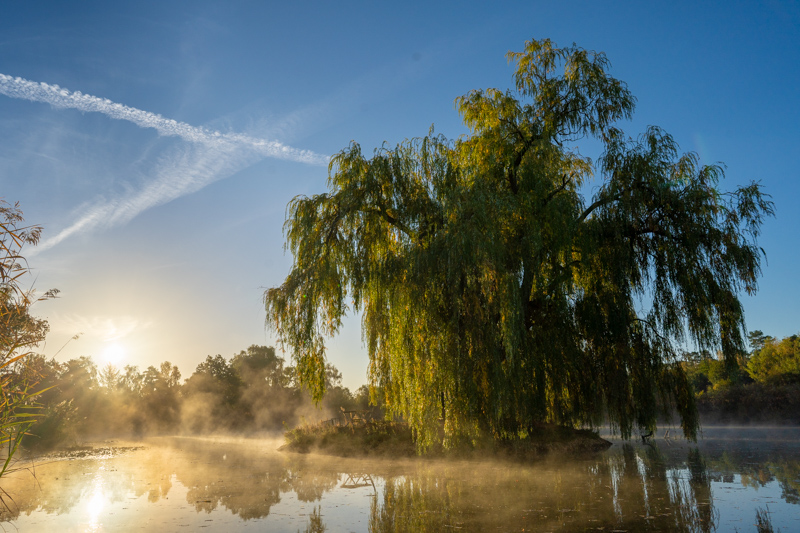
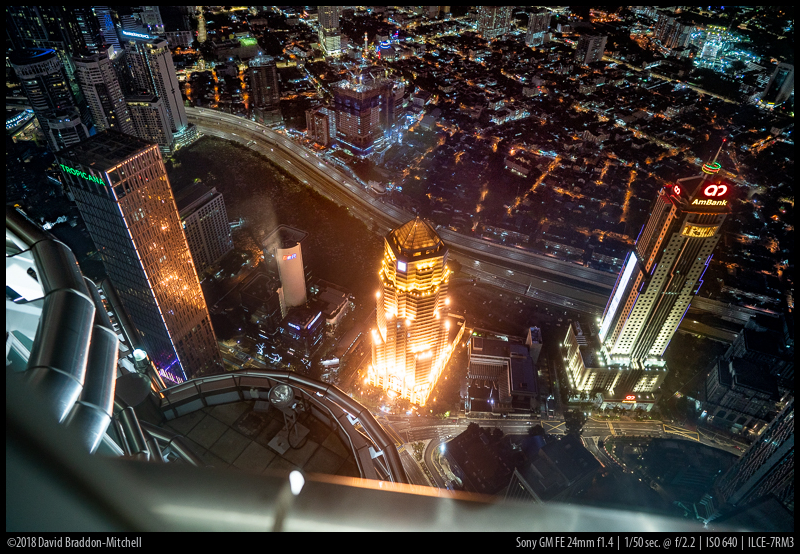

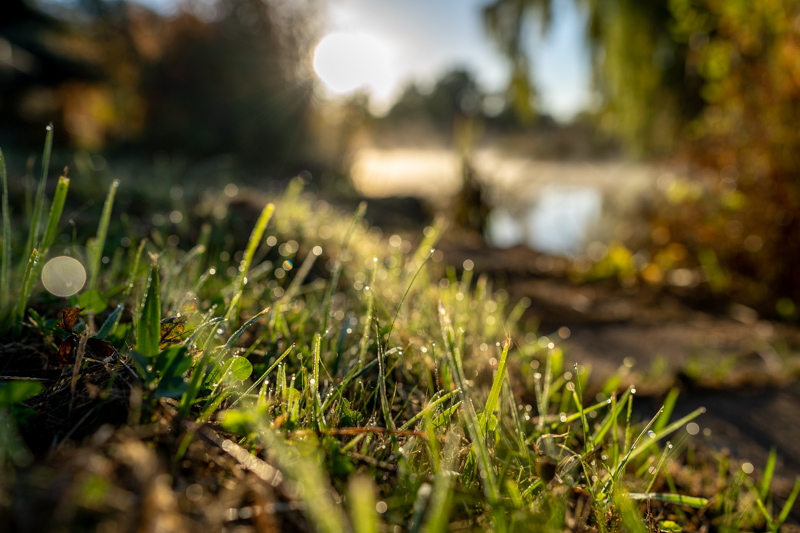 Sony A7III | Sony FE 1.4/24 GM | f/1.4 | full size
Sony A7III | Sony FE 1.4/24 GM | f/1.4 | full size
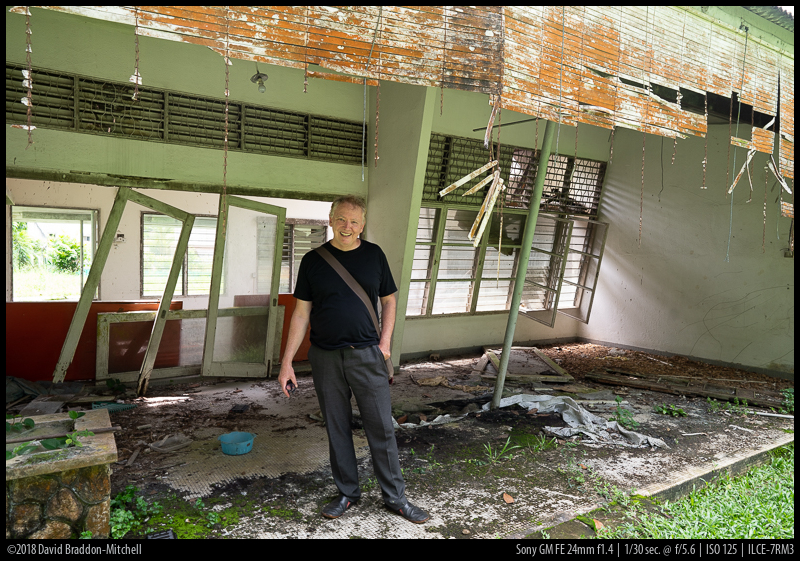



Specifications
The Sony FE 24mm 1.4 GM has the following specifications
-
- Diameter: 75 mm
- Field of view: 84° (diagonally)
- Length: 92 mm
- Weight: 445g
- Filter Diameter: 67 mm
- Number of Aperture Blades: 11 (rounded)
- Elements/Groups: 13/10
- Close Focusing Distance: 0.25 m
- Maximum Magnification: 1:5.9
- Mount: Sony-E
For $1399/1599€ you can order this lens from amazon.com, amazon.de, Ebay.com,Ebay.de or B&H (affiliate links).
Build Quality / Handling
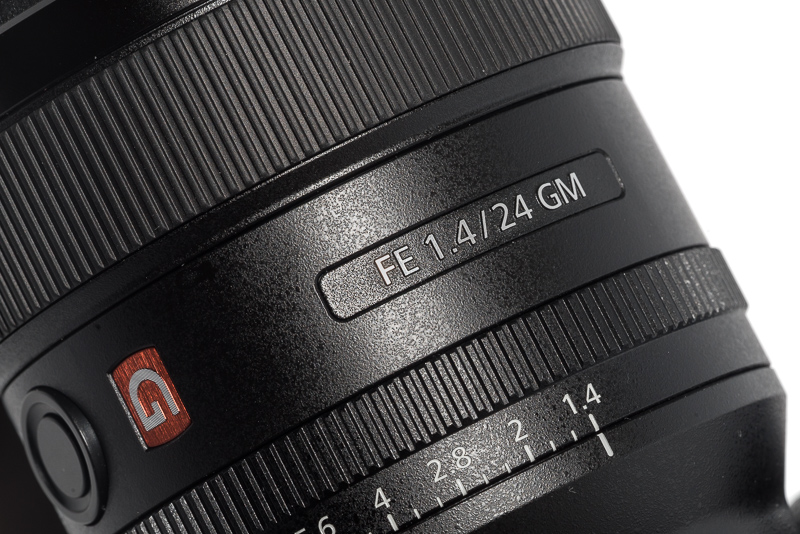
The rubberized focus ring has okay damping and as the Sony FE 85mm 1.4 GM it also has a linear coupling which means it always takes 180° from the minimum focus distance (0.25 m) to infinity no matter how fast you turn the focus ring.
When you turn your camera off the lens will remember the last focus position and will still be there when you turn the camera on again.
The aperture ring has 1/3 of a stop click stops (which you can declick by using a lever on the lens) but those feel a bit different (less dampened) compared to the 85mm 1.4 GM.
You can also set the ring to “A”(utomatic) and let the camera choose the aperture value or use the camera dial to change the aperture value when it is set to “A”.
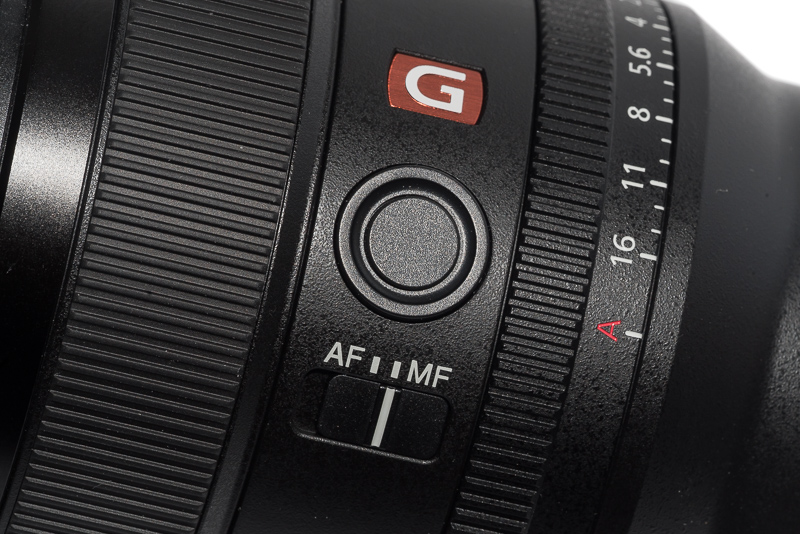
On the left side of the lens there is a programmable button (which I think is a great choice to map with Eye-AF) and an AF-MF switch.
The outer casing seems to be made from a high quality polycarbonate and all markings are engraved and filled with paint.
The hood also features higher than usual build quality with felt on the inside to counteract stray light. Furthermore there is also a button which you have to press to remove the hood, which is usually only found on higher grade tele lenses.
The rubber front bumper seen on the FE 85mm 1.4 GM or the FE 35mm 1.4 ZA is missing here though.
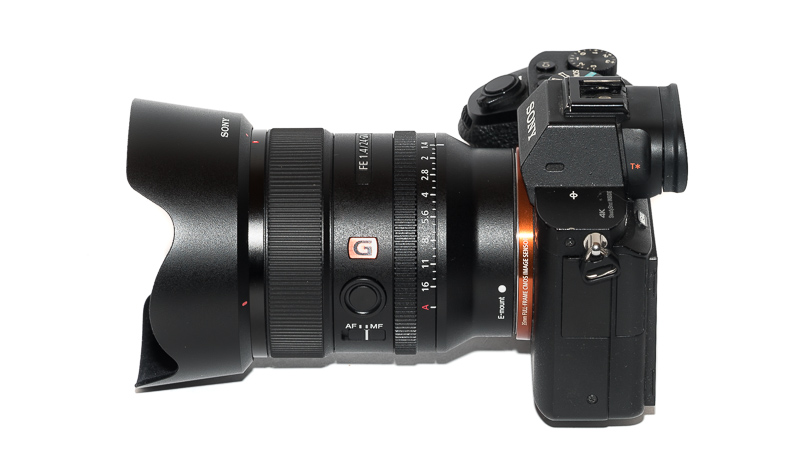
All in all I am quite happy with the build quality of this lens, only the absence of a distance scale bothers me quite a bit.
Nevertheless I highly value many of the design choices Sony made with the GM series (programmable button, aperture ring with actual aperture values instead of that “control ring” on the Eos R series).
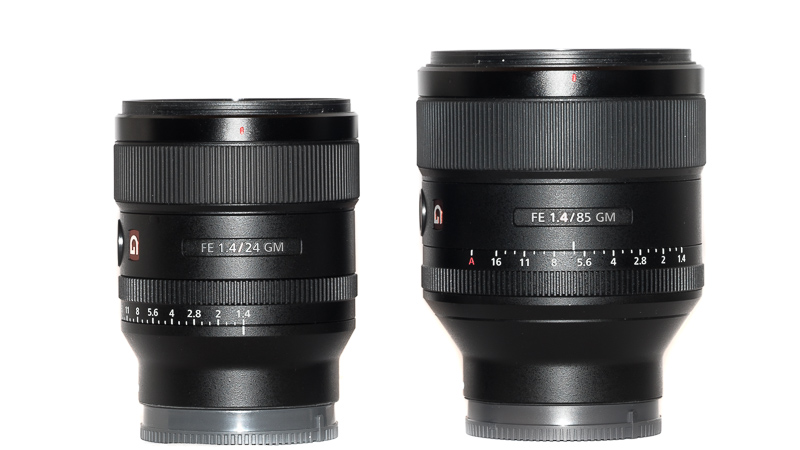
From the picture above you can see the 24mm is significantly smaller in every dimension compared to the 85mm.
Sharpness
infinity

This aperture series was shot with Janniks A7III (24MP). The lens is showing already excellent center and midframe resolution wide open. The corners are already good wide open and improve slightly until f/5.6. The corner sharpness never reaches the midframe quality, the MTF diagraph indicates some astigmatism. The corner sharpness starts to decrease at f/8 and even more at f/11. This could be diffraction due to vignetting. In the center, diffraction becomes visible at f/11.
We have made different observations regarding field curvature. Janniks lens seems to have very flat field on his A7III but Bastians lens shows some field curvature on his A7RII.
These are 100% crops at f1.4 of the lower right corner of Janniks lens. The left side shows the corner sharpness with the lens focused on the center, the right side was focused directly on the corner. The differences are very low as is the field curvature.
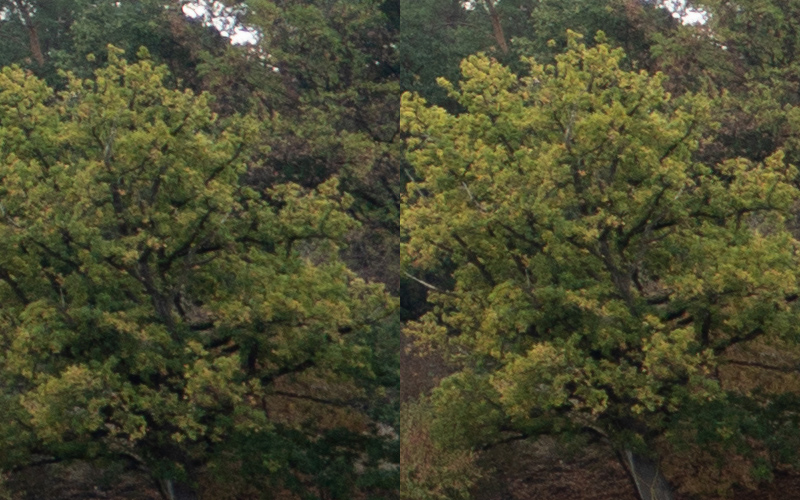
Close Up
At the minimum focusing distance (0.25m), the central and midframe sharpness is already very good wide open. There are slight improvements in contrast and edge acuity until f/2.8 where the center doesn’t improve any further. Even the extreme corners are very good at this aperture, quite unusual for a wide angle non-macro lens.
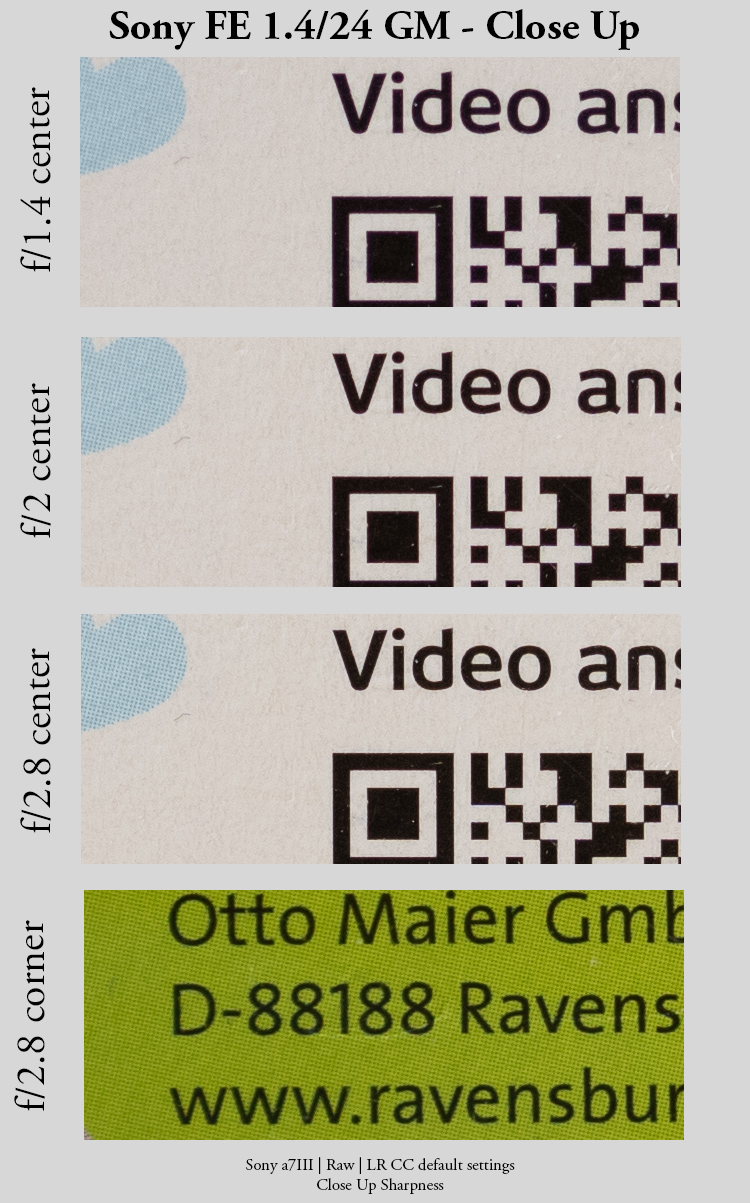
Flare resistance
I took the lens though a very tough challenge today and learned a bit about the flare behavior. In general, flare seems to be controllable but provokable. I will show you a few images that contain possible lens flares. In the sample image section there is an image from exactely the same situation without flare. Please keep in mind that this is a very extreme test, most of the images will show much less flare.
1) Sun close to the center
This shot shows a ray that is containing different ghostings from the lens elements. It was possible to move that ray around the frame as long as the sun was close to the center. I guess this is the type of ghosting that videographers like (landscapers not).
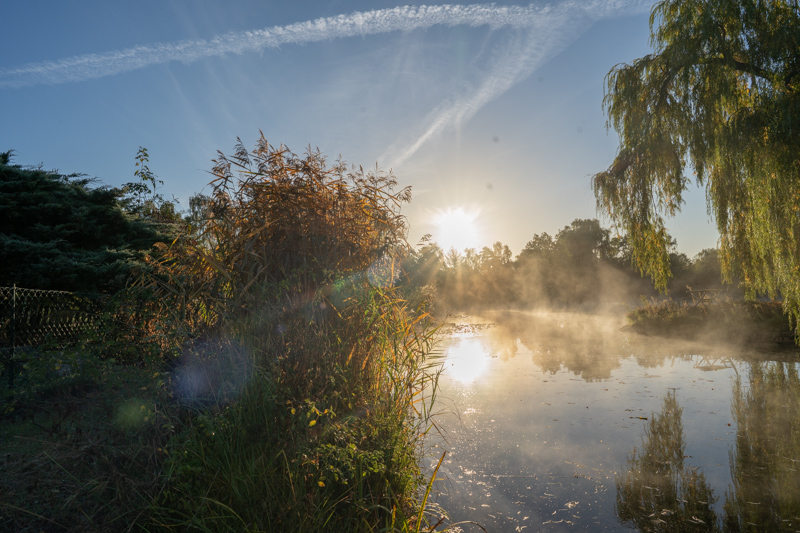
2) Sun in the midframe:
There were different artifacts visible with the sun in the midframe:
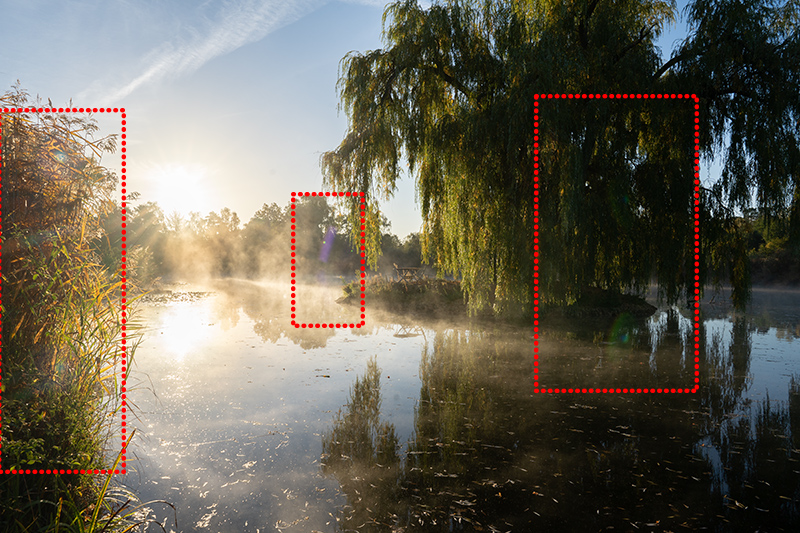
There can also be some green veiling flare although it is quite rare.
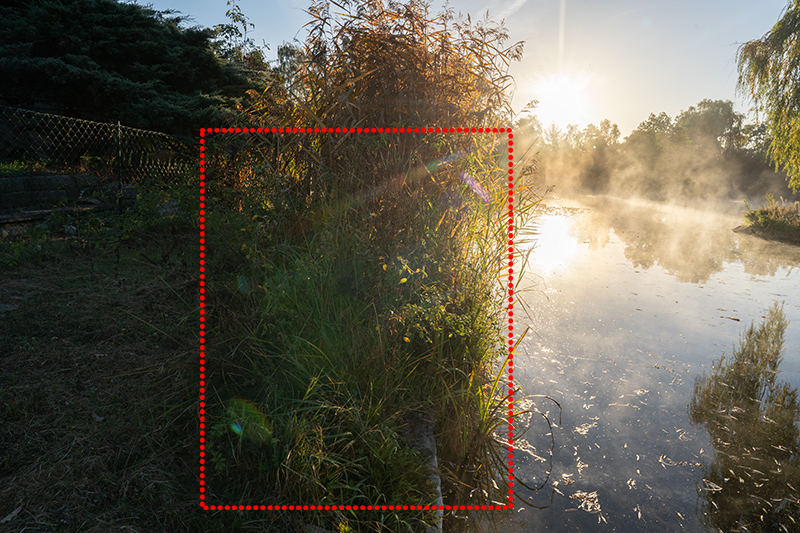
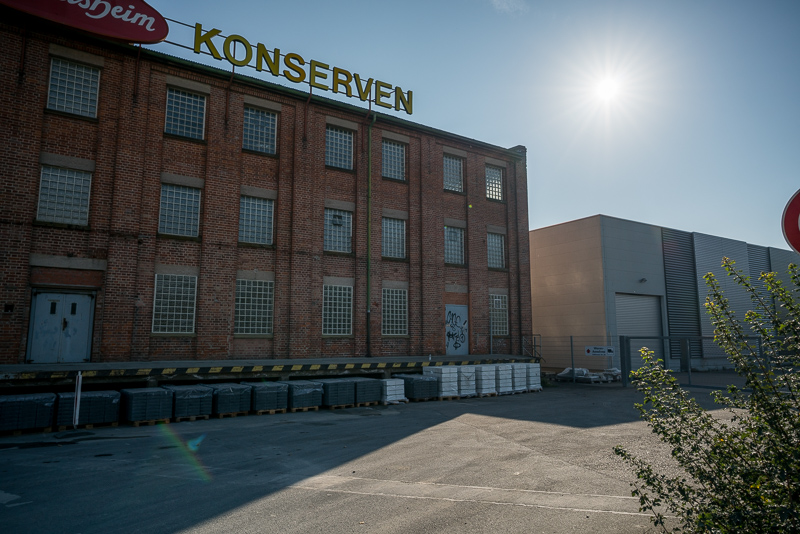
3) Sun just outside of the frame
If the sun is just outside of the frame and the lens hood is not used, this obstrusive rainbow-coloured ghosting can appear:
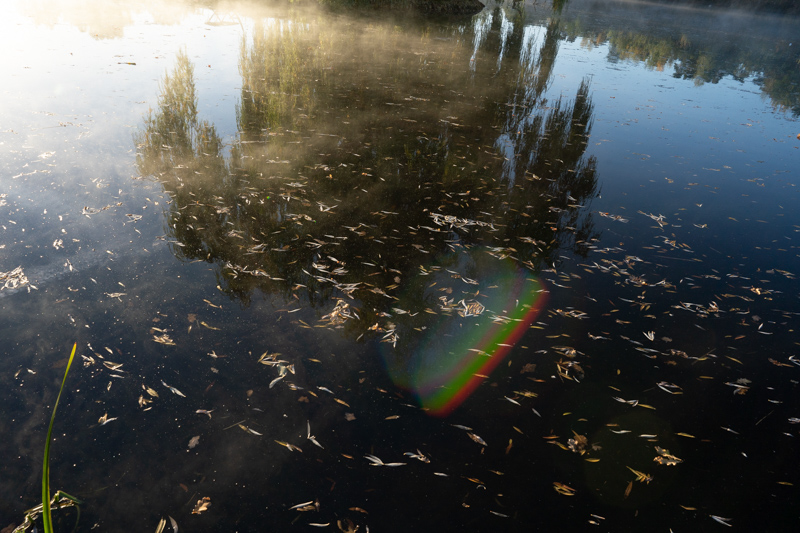
4) Wide open flare
Usually, flares are most obstrusive stopped down. However, this ghosting flare only appears wide open at the edge of the frame and can be quite annoying:
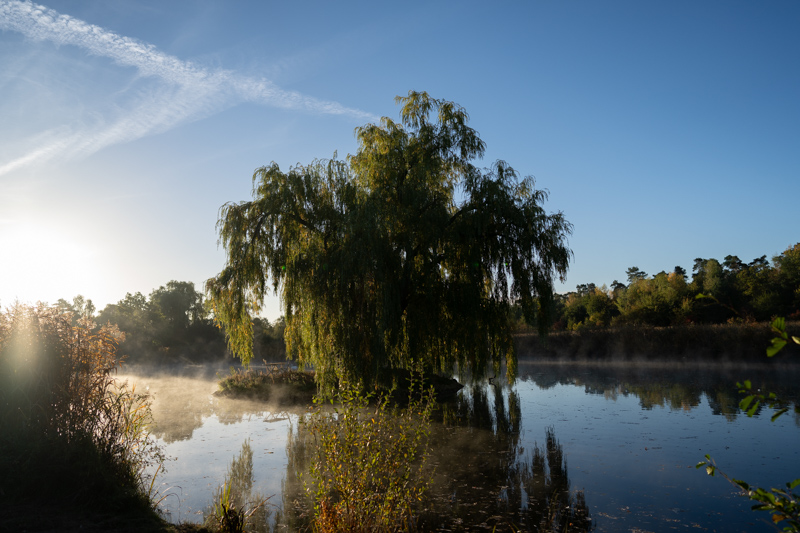
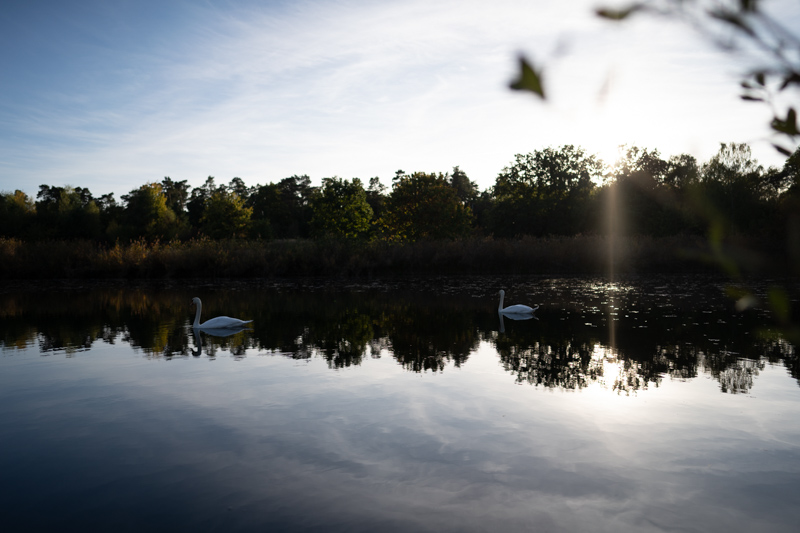
The Sony FE 1.4/24 GM won’t set new standards when it comes to flare resistance, that is for sure. Lenses like the 21mm 2.8 Loxia are in a different class in this aspect. On the other hand, flare resistance is still better than many other wide angle prime and zoom lenses. We will continue to look at that aspect until we make a final judgement. A night light scenario will follow too.
We have some sun in the frame images taken on David’s A7riii. Starting with sun in the upper centre:
And here are three apertures with the sun in the corner
In all of these images (which have substantial exposure and shadow lifting in post) there is very little flare despite the unveiled sun. There is a little artefact in the opposite corner in the corner case, and vertically opposite in the upper centre case. This is actually extremely good performance for a fast wide lens. I think we all agree that there has been some hasty negative hype about the flare performance of this lens, based on crops taken in extreme conditions and massively lifted. One such crop is by the internet pundit so many love to hate: Ken Rockwell. But Rockwell knows a thing or two, and when he took and image of the sun between trees in a dark forest, and raised in many many stops of shadow and exposure boosting, he said – rightly – that this was good performance. But some folks saw the crops, didn’t understand the conditions they were taken in, and concluded that the flare performance was poor.
Coma
The GM 1.4/24 shows some coma wide open which is well controlled after stopping down just one stop. Furthermore, there is some purple fringing around bright stars. This can be handled by the manual CA correction of Lightroom. I think the performance is very good for a wide angle lens of that speed. I wouldn’t hesitate from using it wide open.
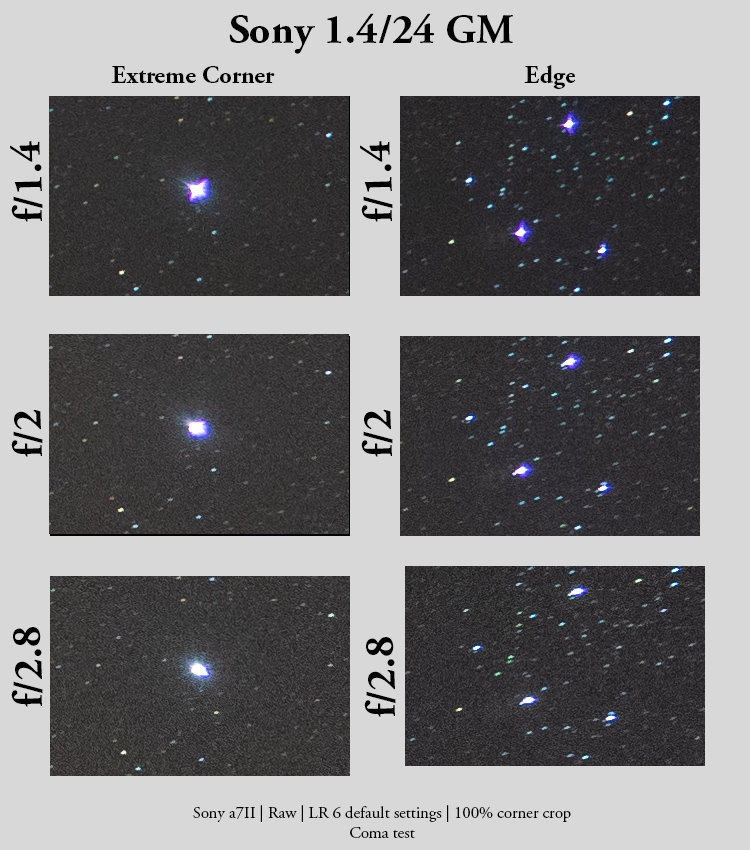
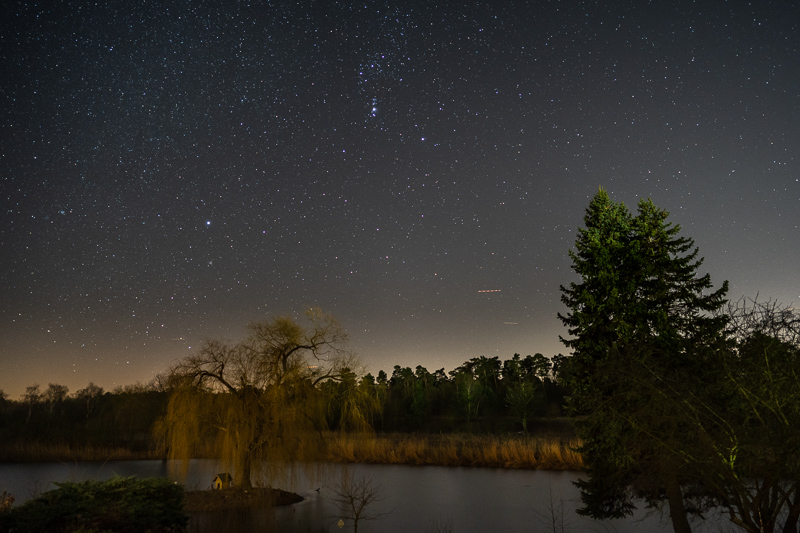
Distortion
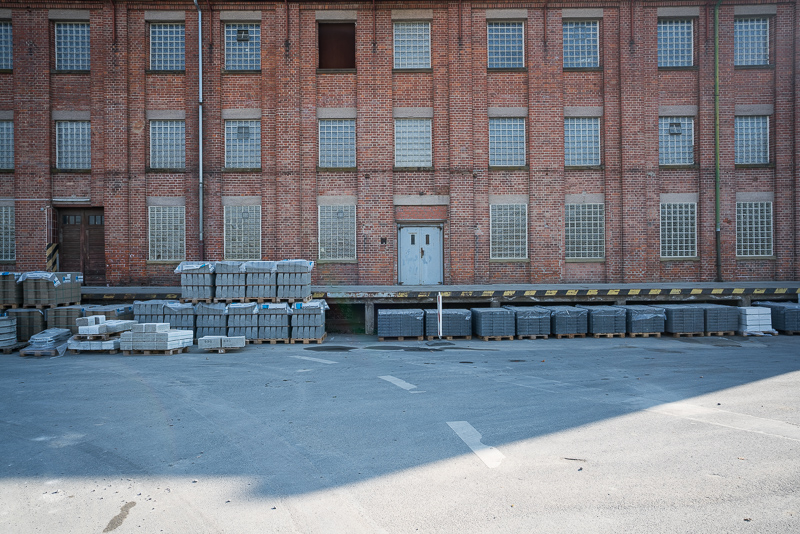
Most wide angle lenses show barrel distortion, but this lens shows a mild pincushion distortion, which will be invisible in most images except of architecture.
Correction profiles are available. The distortion can be corrected easily with a value of -3 in Lightroom.
Vignetting
Light Falloff
The Sony FE 1.4/24 GM exhibits a high amount of vignetting wide open. It starts with 2.8 EV at f/1.4 and decreases quite rapidly until f/2.8. From that point, it decreases only slowly and doesn’t get less than 1.7 EV (reached at f/8).
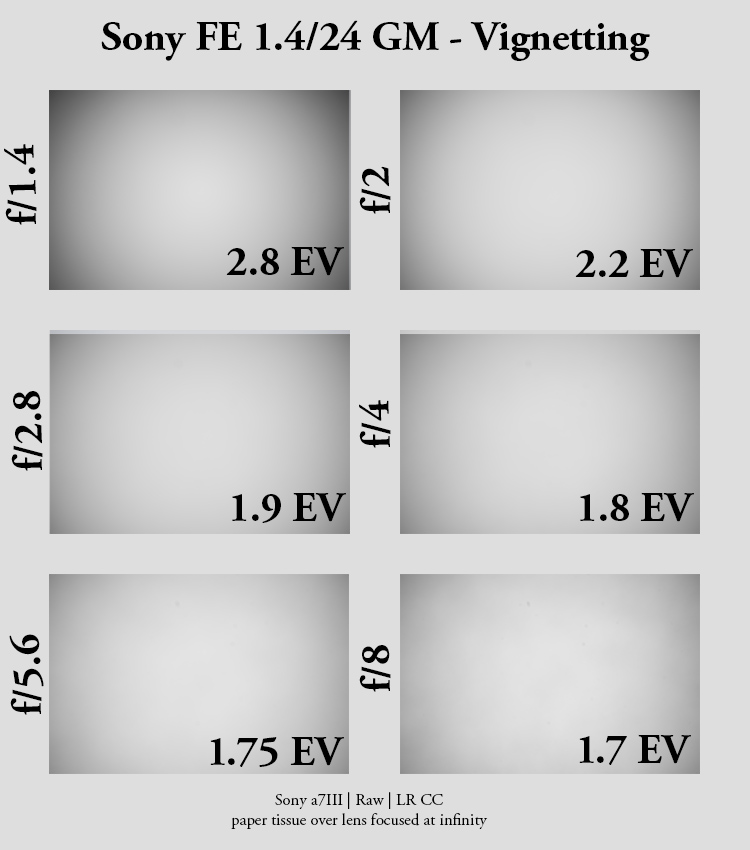
These figures look high, but the mirrorless wide angle prime competition is about the same. The Loxia 2.8/21 and the Sony FE 2/28 have more than 3EV vignetting wide open.
Mechanical Vignetting
The Sony FE 85mm 1.4 GM had very low mechanical vignetting compared to the competition and I was hoping the FE 24mm 1.4 GM will be the same.
So in the following comparison we move from the center (left) to the extreme corner (right) and see how the shape of the light circle changes.
Already wide open the GM shows only very moderate mechanical vignetting. Because of the wide field of view the light circle when placed in the corner appears slightly bigger compared to the center. Interestingly this makes the light circles at f/1.4 look like they have pretty much the same size across the whole frame which I think gives a very natural rendition.
This comparison was done at 0.3 m focus distance, you may get slightly different results at other distances.
Bokeh
The 24mm 1.4 lenses that I tried so far (Nikon and Sigma Art) struggle quite a bit with double edged structures towards the corners, so I was looking for some foliage and taking pictures at different focus distances. First we have a look at the whole images:
And now we have a look at 100% crops from the upper right corner:
At about 1.0 m focus distance the transition zone overlaps with the background. This is where most fast wide angle lenses struggle and the GM holds up pretty well. Of all the 24mm f/1.4 lenses this looks like the smoothest bokeh rendering to me.
What really surprised me about the FE 85mm 1.4 GM is the lack of spherical aberration in the focal plane but the significant amount behind the focal plane which is what makes the bokeh looks so smooth. In this crop we can see that this is also true for the 24mm lens (slight glow on the red/white signs):

To me this is seriously good news, as the bokeh of the FE 85mm 1.4 GM was unlike (better than) anything I have seen before.
The Sony 1.4/24 GM features XA (Extreme Aspherical) elements that should provide the advantages of aspherical elements without affecting the bokeh in terms of onion rings. We have seen, that this works very well with the Sony FE 1.4/85 GM, so we had high hopes for this lens. I had a very close look at the bokeh and I couldn’t spot onion ring patterns. Around the close focusing distance in front of the focal plane and in the harshest light, there is some minor outlining but nothing that matters.
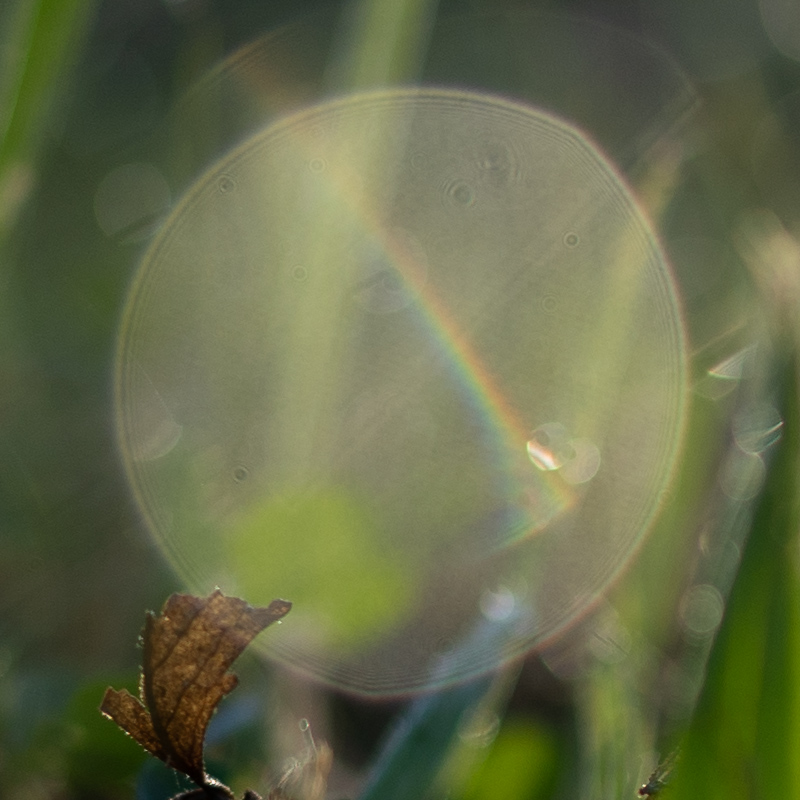
I found some traces of onion rings in this scene. I took more than two thousand images with the lens so far, this was the only scene where it was visible. The distance was a typical half body portrait. Usually onion rings are not an issue at all.
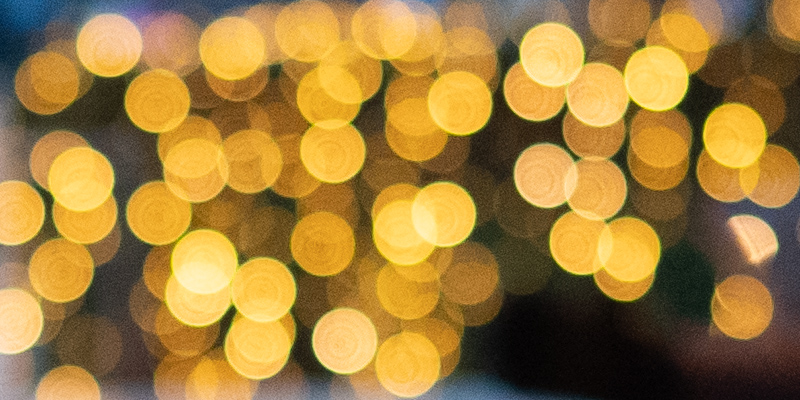
Chromatic Aberrations
Lateral
Lateral chromatic aberrations are not an issue in practice. They are corrected by default in any RAW-Editor which can not be turned off.
However, if the cameras JPEG lens corrections are all turned off, LaCA becomes visible in the corners at mid-distance, less so with subjects that are far away. This is the most extreme sample that I found yet.
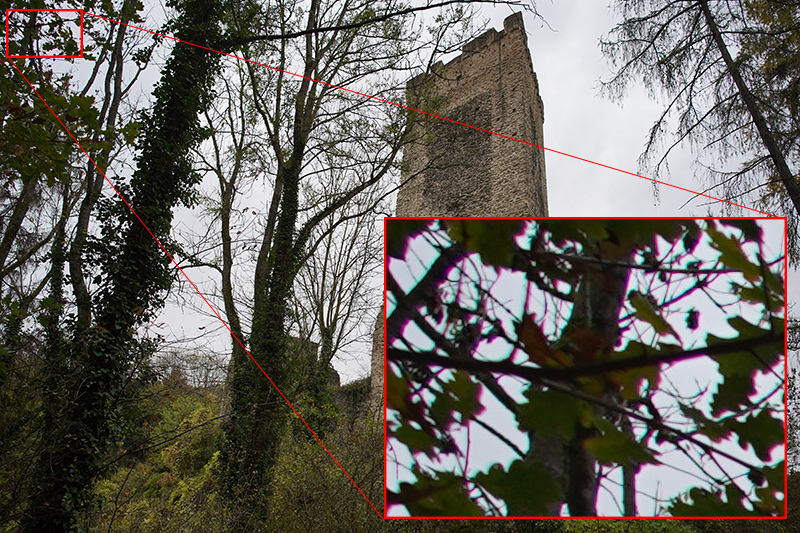
Longitudinal
The lens can exhibit some green/purple longitudinal chromatic aberrations under demanding circumstances. This is comparable to our fountain test which is the most demanding scenario. The LoCA are mostly gone by f/2.8.
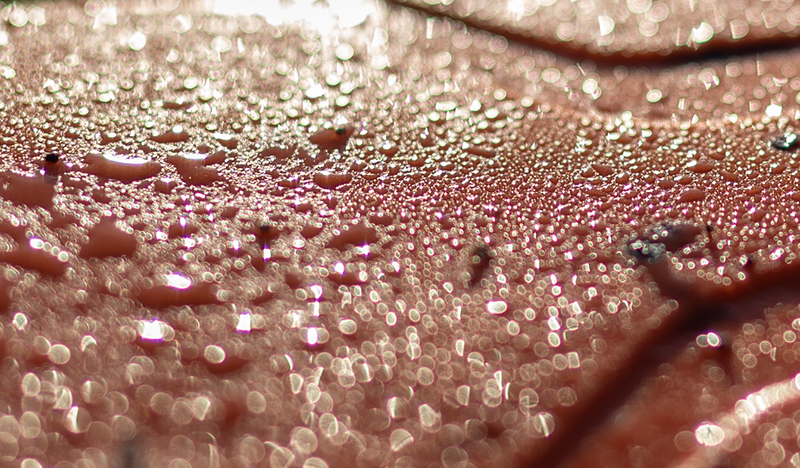
The level of LoCA was mostly very low, even when I expected to see much of it. It seems to depend on the light if LoCA will occur or not:
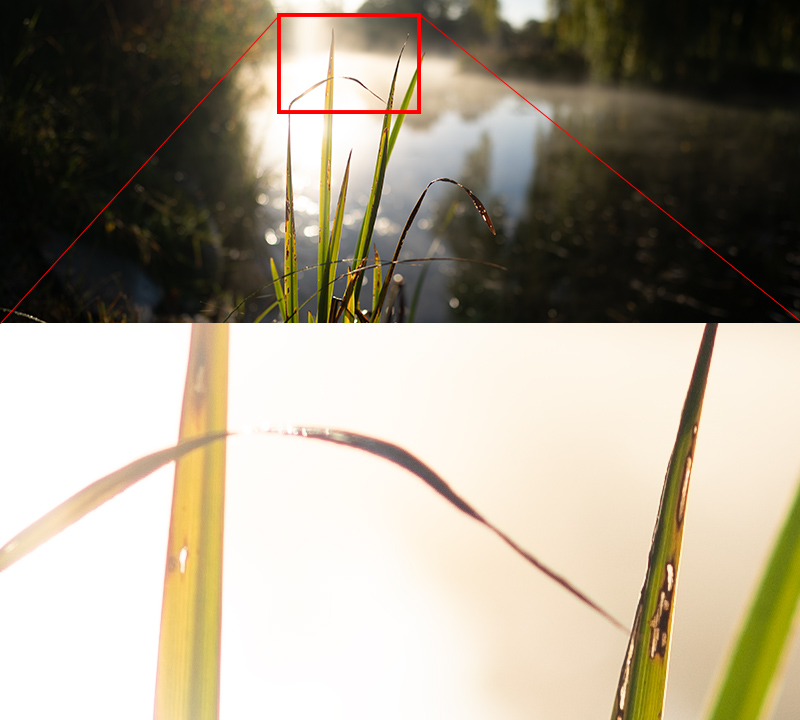
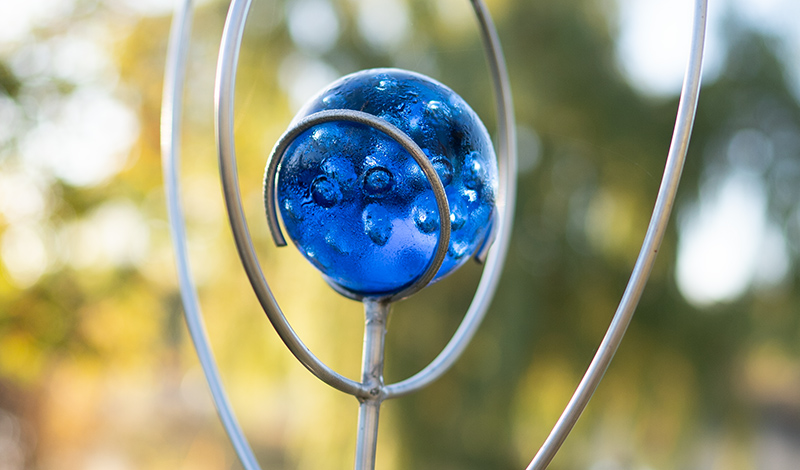
Alternatives
In this focal length range we already have the Zeiss Batis 25mm 2.0, the Zeiss Loxia 25mm 2.4 and the “native” Sigma Art 24mm 1.4.
The two Zeiss lenses spot a similar price and while I see that the Loxia still appeals to the MF enthusiast, I am not so sure in the future many will pick the Batis over the GM, as the GM is only 100g heavier, yet a full stop faster and equipped with more controls.
The Sigma will be a good budget option, for those that care less about size and weight.
Comparison with the Batis 25mm
One of us (David) had the Batis 25mm for some time (I reviewed it here). Unfortunately it had to be sold to fund the GM 24mm, so direct comparisons are not possible. But having used it extensively since it came out, and having shot the GM for a week for my contribution to this team review, I can say a few words which might be of interest to someone trying to decide.
When I first used the GM I would not have known it was a little larger and heavier than the Batis if I hadn’t looked at the specs. This is remarkable, a full stop faster and yet a very similar form factor. The GM is as sharp wide open as the Batis is stopped down a little; so the GM at f1.4 is sharper than Batis at f2. And the bokeh of the GM is much nicer both wide open and f2 than the Batis, and perhaps a touch better at other apertures.
I have seen online complaints about flare and CA on the GM: but again both are considerably better, in my experience than the Batis! There were complaints about some images of the GM taken with the sun showing though a dark forest, but they were nowhere near as severe as this Batis image:
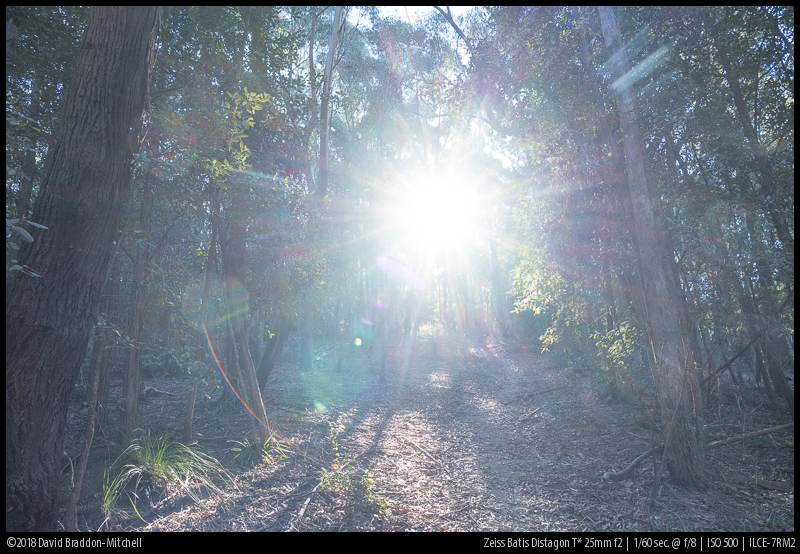
This is not really to comply about the Batis; it’s a torture test to have a ver dark forest with the sun shinning through, and then lift the shadows. But the GM handles itself much better in these situations.
In my general flare tests which will be added to this article soon, the GM acquits itself really well: outstanding for a fast wide.
So where does this leave us with respect to Batis? Well, if you are looking for a fast 24 to complement your fast zoom lens, or perhaps your Loxia 25, the Batis does not make sense. It doesn’t have enough speed advantage over an f2.8 zoom or the Loxia, and it isn’t as good as the Loxia and has only a modest IQ advantage over the zooms (though some).
Bur on the other hand if you are putting together an AF prime set, the Batis remains an excellent choice at the low used prices you can now get. It is superb from f2.8 and it’s f2 performance, while eclipsed by the GM, is good by the standards of previous f2 wides. The GM is the better lens for the first few stops and is worth the extra outlay if you can afford it, but the Batis is very fine. The Batis might also still make sense if you use a slower f4 zoom, and are looking for a more affordable but still high quality fast 24 to complement it.
Conclusion
good
|
average
|
not good
|
All authors of our blog appreciate the performance of the Sony GM 85mm 1.4. When Sony announced the GM 24mm 1.4 we were happy, but were also debating whether the Sony lens designers actually know what they got right with the GM 85mm 1.4. The most important things we like about the 85mm is its gorgeously smooth bokeh rendering including best in class (meaning lowest) mechanical vignetting and the great build quality with eye-AF button and aperture ring and linear manual focus.
After spending many months with the Sony 1.4/24 GM we can tell you that they indeed got all this right again.
Furthermore, this lens is the ultimate jack of all trades when it comes to wide angle lenses. It is quite small, light, has all the comfort of a high-end lens, great build quality, decent landscape and astro performance and is also excelling in portrait, wedding and documentational photography. This is the best lens if you shoot many different subjects or want to own just one wide angle lens.
Bastian has been a long time user of the Nikon AF-S 24mm 1.4G back when he was shooting Nikon DSLRs. He appreciated the benefits of the speed and focal length especially in these scenarios:
- Astrophotography (if Coma correction is really good)
- Environmental portraits (watch the distance to the subject)
If you are in the market for a 24mm f/1.4 lens this really seems to be one of the lenses showcasing the benefit of a narrow flange focal distance, offering a real benefit over the comparable DSLR lenses. Actually this is the first 1.4/24 that I can recommend to a broader range of people (not only for speed junkies), mostly because of its moderate size and speed and its well rounded optical performance.
Please consider to buy your gear with one of these affiliate links to support our site.
For $1399/1599€ you can order this lens from amazon.com, amazon.de, Ebay.com,Ebay.de or B&H (affiliate links).
More Sample Images
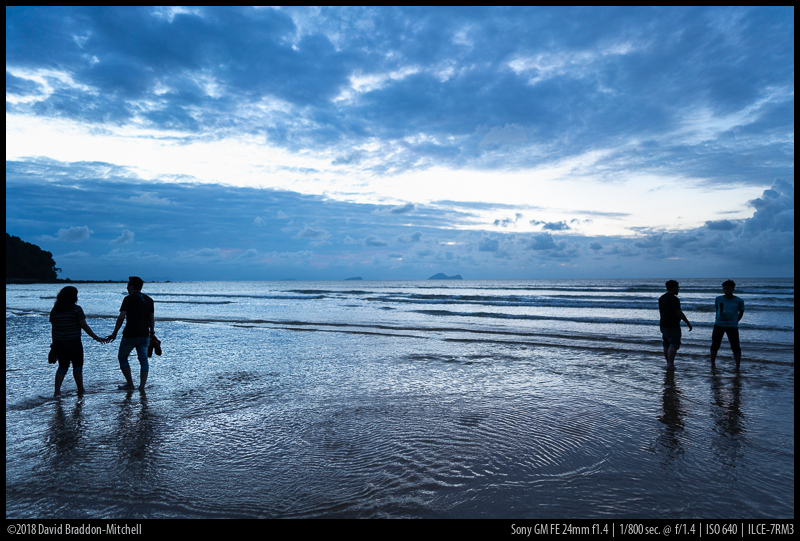

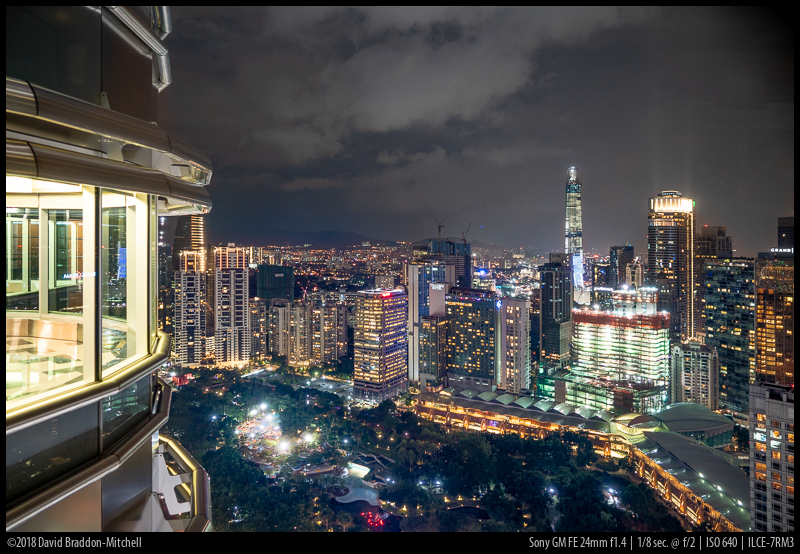
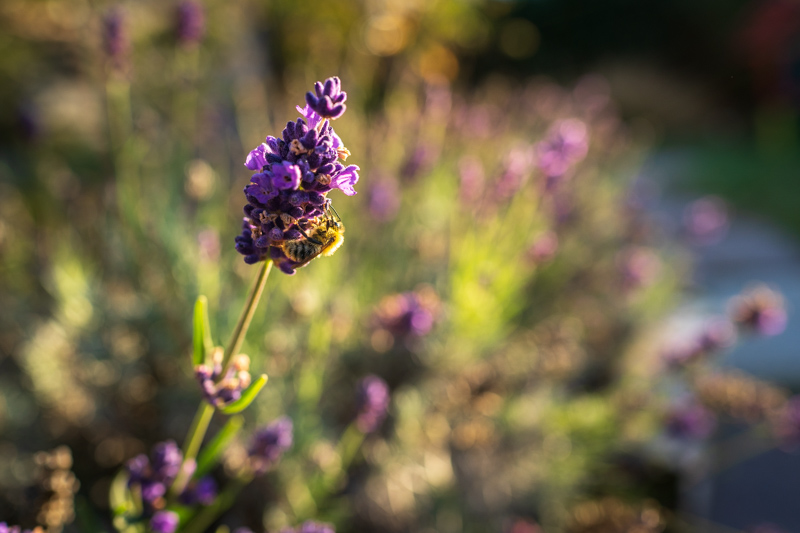
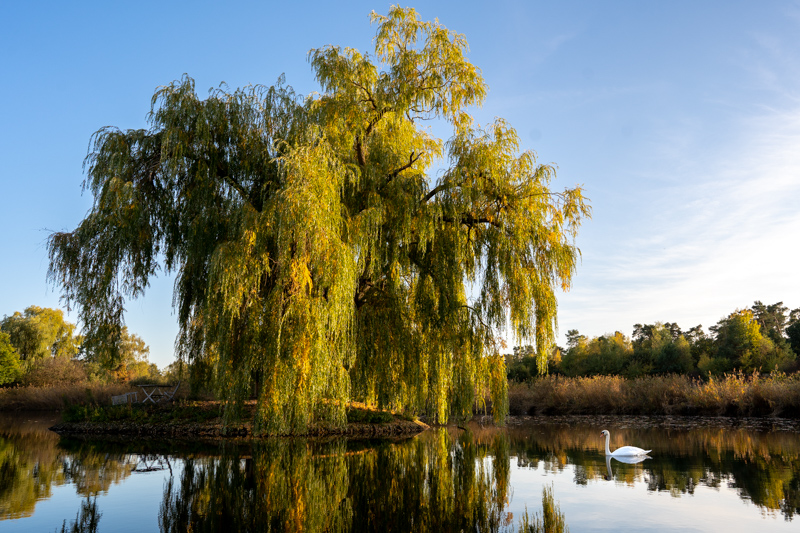
Further Reading
- Photokina Recap Part 1: Viltrox E-mount lenses
- Review: Zhong Yi Mitakon 50mm 0.95
- Review: Sony FE 85mm 1.4 GM
- Guide: Sony FE lenses
Support Us
Did you find this article useful or just liked reading it? Treat us to a coffee!
![]()
![]()
![]() via Paypal
via Paypal
This site contains affiliate links. If you make a purchase using any of the links marked as affiliate links, I may receive a small commission at no additional cost to you. This helps support the creation of future content.
The Team
Latest posts by The Team (see all)
- Sony FE Lenses: The honest Guide for the A7/A9/A1 Series - March 18, 2025
- Guide to best Sony E-Mount 35mm Lenses for A7/A9/A1 series - March 8, 2025
- Guide to the best Portrait Lenses – Sony A7/A9/A1 series - February 22, 2025
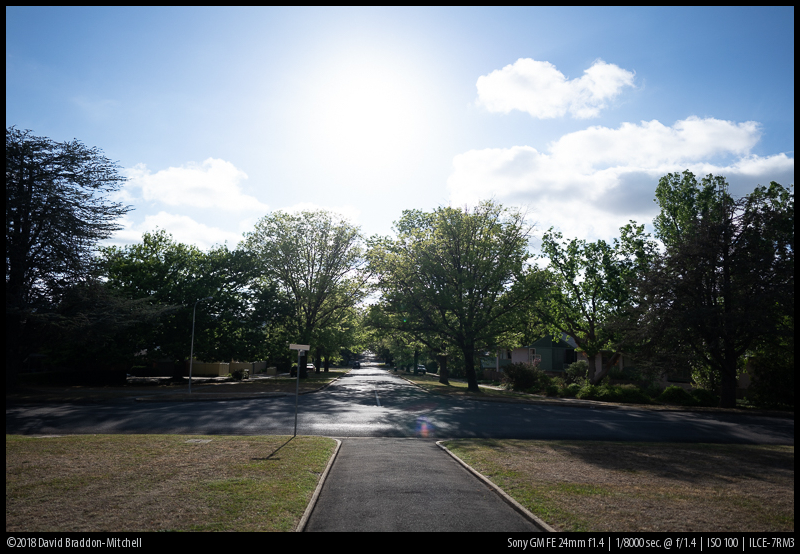


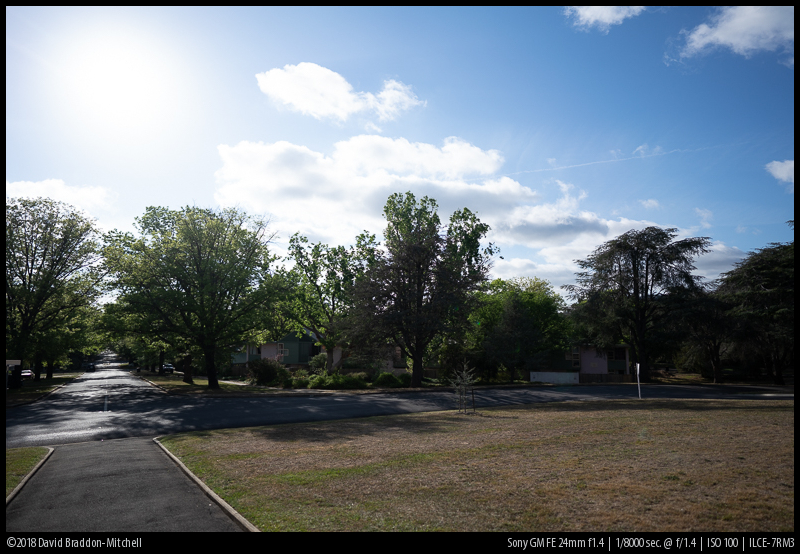
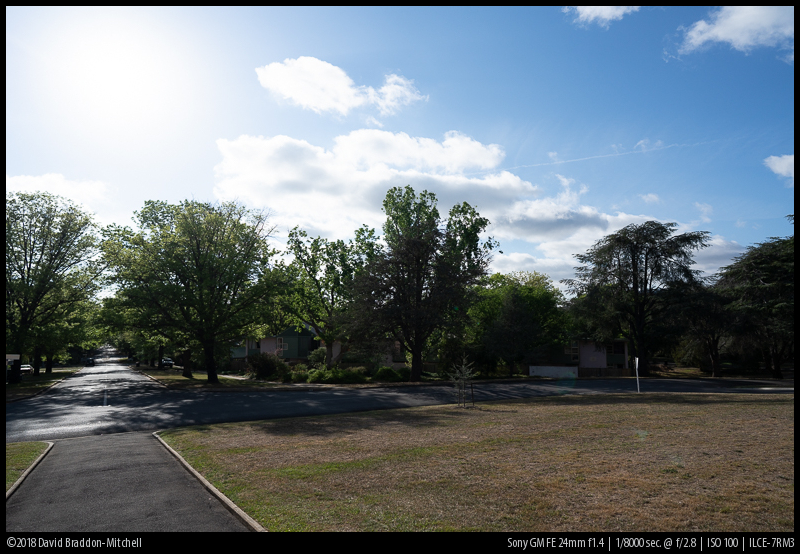
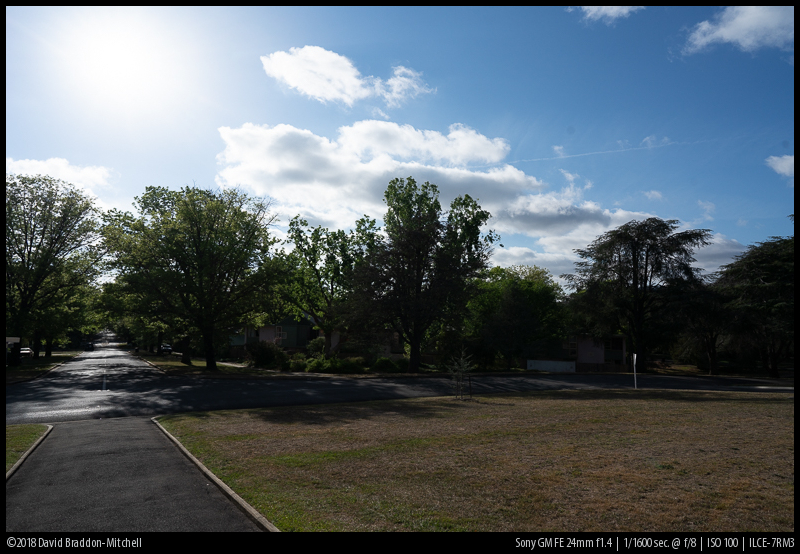


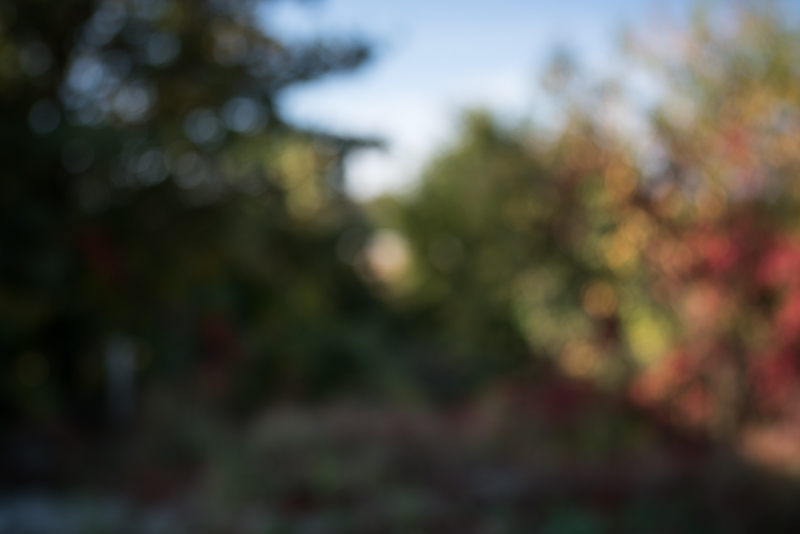
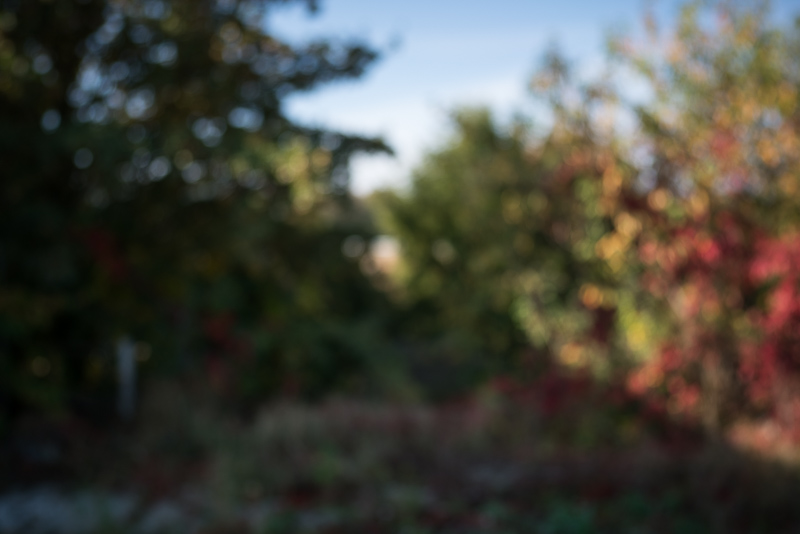

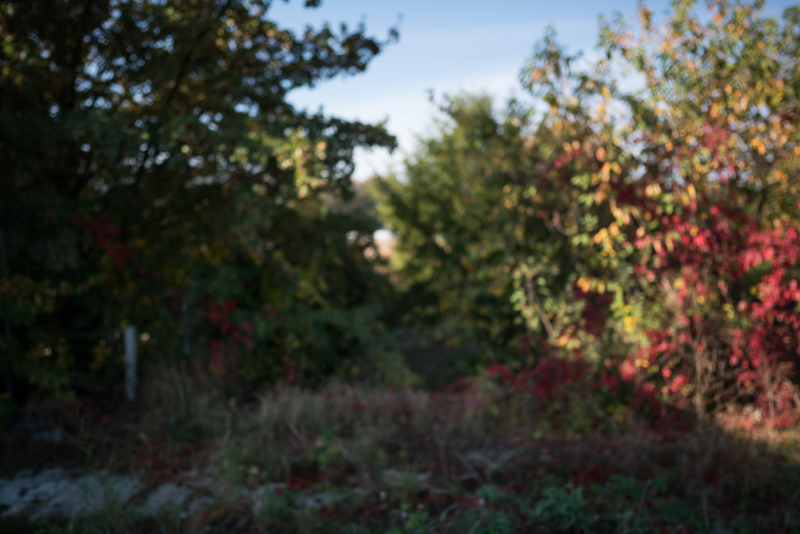
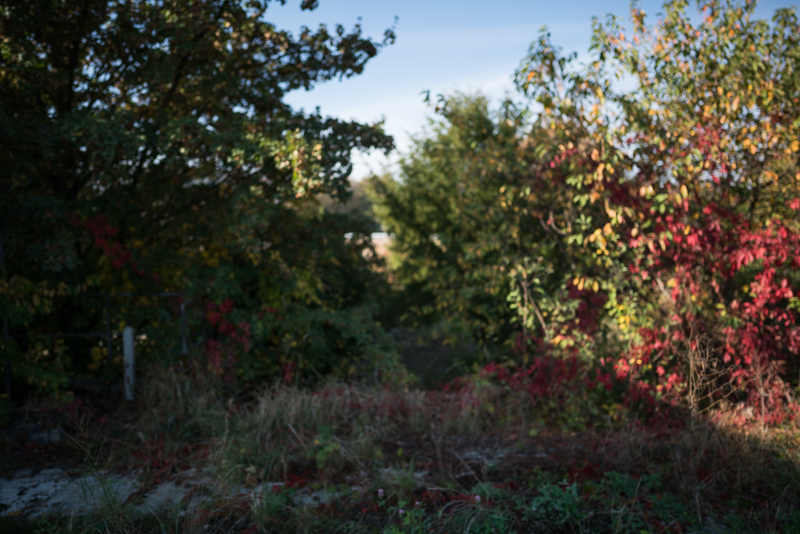
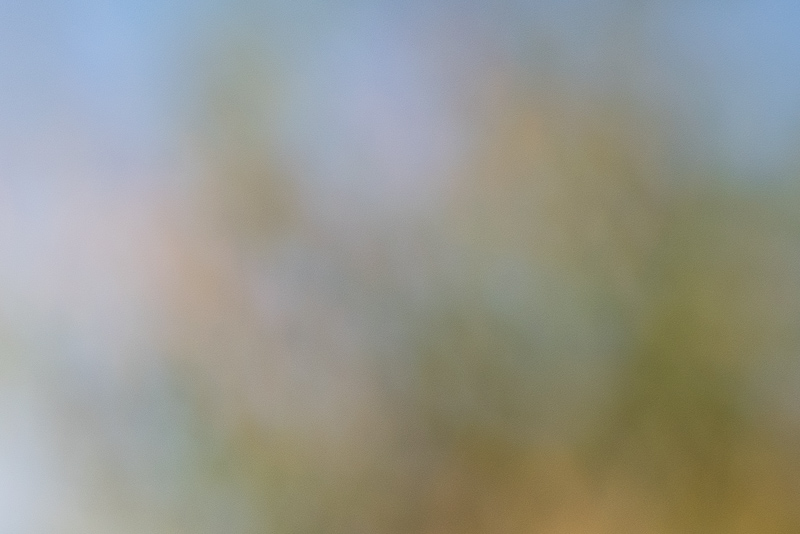
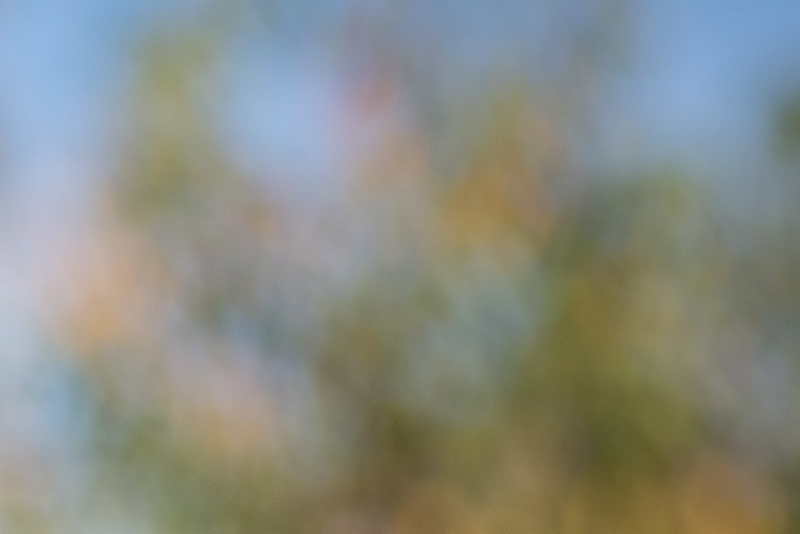
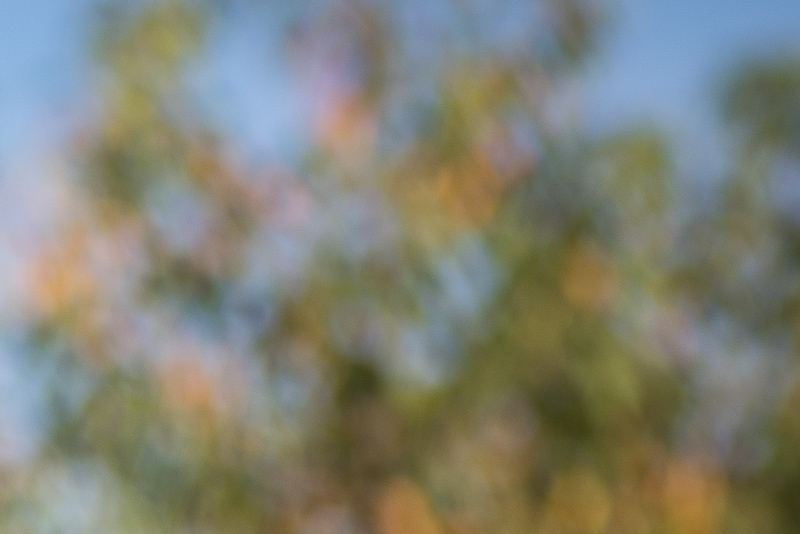
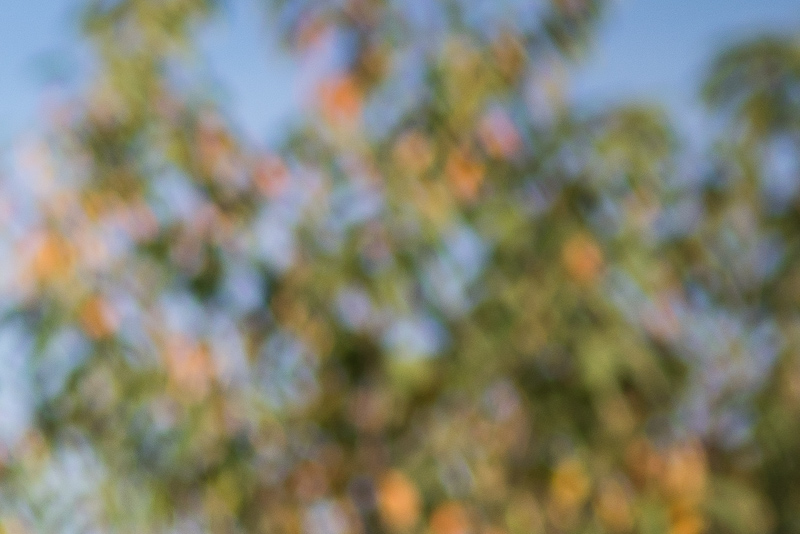
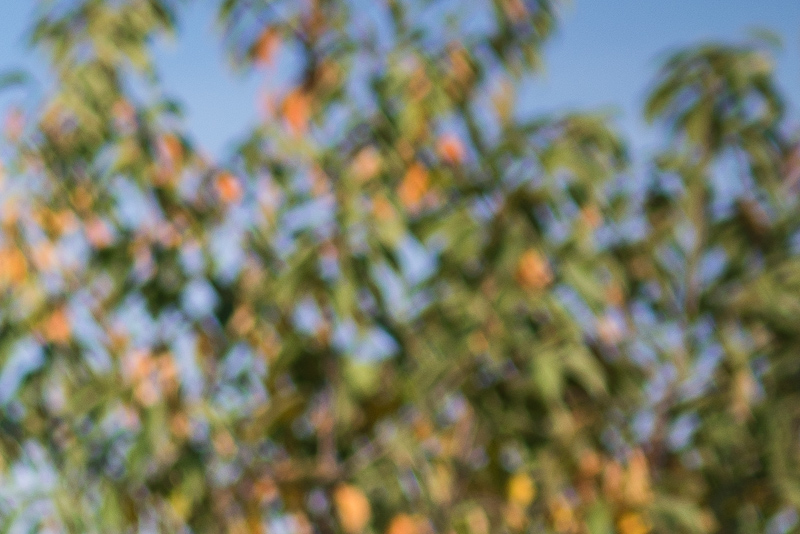
I am really looking forward for the review of this one as I am still looking for a super fast wide angle for astro photography. I really hope coma correction and flare resistance are good.
I heard that the coma is great and Sony made ads about its coma correction alot
“A new optical design incorporating two precision XA elements suppresses sagittal flare, a common aberration in large-aperture lenses. Sagittal flare can cause an unnatural spreading of point light sources that becomes more pronounced towards the image periphery.”
Looking forward to your fine review, and samples of its application. I have never shit using a 24mm and not too sure if I might need it ever, but I can always be tempted…
THank you very much for your work Bastian, I’ve been taking pictures with the Nikon 24mm f1.8 in sony a7ii for a year
I’m really looking forward to this Sony lens surpassing the Nikon, because I have not found anything better, in my opinion of biginner photography Nikon 24mm f1.8 is better than f1.4 and better than 20mm f1.8
I know you do not have time, but I would like you to review Nikon 24mm f1.8 some day
I have to agree that the Nikon 24mm 1.8G might be the best balanced lens in this range (yet).
When I was shooting Nikon it was not available though, I used the 1.4 and traded it in for the 20mm 1.8G which I sold when I got the Loxia 21mm 2.8.
Thank you very much your answer, we expect a year 2019 of news in photography that my opinion has driven Sony by clicking Canon Nikon Panasonic, missing Olympus, I’m looking forward to see your review of the Sony 24mm f1.4
Thanks you very much
“In this focal length range we already have the Zeiss Batis 25mm 2.0, the Zeiss Loxia 25mm 2.4 and the “native” Sigma Art 24mm 1.4.”
What about the Rokinon 24mm f1.4 lens? If your primary reason for buying the Sony is for astrophotography, I would recommend the Rokinon which is much cheaper.
My current ownership of the 28mm F2 is so far keeping me off the pre-order list for this lens…I’m trying to justify it to myself, but not sure the added cost is worth the width and stop of light.
That 28 has its quirks, but boy is it great value for money.
Great take on what looks to be a promising lens! I dont have much experience with wider lenses in general so I would like to ask your take on using a 24mm as a “walking around” lens. I know people typically opt for 35mm in conjunction with a normal lens for general use, but would 24mm be a good alternative if I use it in conjunction with something like a CV 65? Thanks!
That is something, I am also curious to find out.
If you are using one of the higher MP count cameras you can also crop to a 28mm f/1.6 or a 35mm f/2.0, both lenses currently not existing with Autofocus for E-mount cameras anyway.
Hi B
Its easy to crop to 35/2 due to camera crop mode. But how do you crop to 28/1.6 during post processing? Is there a software which lets crop to different exact focal lengths later?
Thanks,
Anurag
You could use Photoshop and dial in the exact pixels of the 28mm crop, but I rather plan on cropping what I think will yield the best image.
Just need to keep in mind to leave some room when taking the shot.
Have you thought about doing a writeup on “environmental portraits”? I assume that is how you handle “I have seen some cool samples from the Sony events, but I have also seen some beautiful models with distorted faces, so don’t just follow the hype.” I for one would be interested in hearing tips. Love your other articles.
If there is interest I can write an article like that.
I’d be interested in your thoughts on that subject,
Bastian.
I have good news for you, in anticipation of the 1.4/24 I decided to write such an article which will be published soon.
Hi Bastian, what do you think about using this lens for street photography?
I think everyone has his or her favorite focal length for street photography.
Back in the day I was using the Nikon AF-S 24mm 1.4G on a Nikon D700 for this and it worked quite well for me.
A few pictures in my album for the Nikon 1.4/24 might qualify as street photography.
Thank you for the answer! Very nice pictures!
Please can you do a comparison with the Batis 25mm if possible.
Thanks!
“Corners lag a bit behind even at F8”
Means they are sharp (for landscapes) but not as sharp as the center.
Right?
Yes…but by the sounds of it the corner sharpness may been effected by field curvature. Best to wait for the final tests
That is my recommendation as well 🙂
I am at the moment considering which lens to buy with the a7RIII as a first lens.
I have sold most of my old camera gear and am trading the camera and a lens in for the a7rIII.
My most used lens was the Sony 20 f/2.8 closely followed by my old Minolta 24-105 and my most used focallengths as a primary landscape/architecture photographer is by far 20 and 24 (factor 8:1) followed by 70 100 and 200.
I have from your recommendations narrowed down to the Loxia 21 or the Sony 24 GM, so I am also awaiting your review.
Right now I am leaning towards the Loxia because I always can crop to 24 and because of the GM corners you have shown here, and then buying the Sony 55 f1.8 and some old adapted manual lenses for portraits and tele.
What would you do ? I have to decide before next year.
Thanks for a great site.
Mit Freundlichen Grüßen
David Cartagena
Are you completely out of Instagram? Long time since your profile was updated.
My work: http://www.davidcartagena.dk
My favorite 2 lens set is 21mm 2.8 Loxia + 85mm 1.4 GM.
The 55mm 1.8, I am not the biggest fan for several reasons. In case you want a ~50mm lens I would recommend having a closer look at the 50mm 1.4 ZA.
You can find me on flickr, but we pretty much abandoned Instagram.
Thank you Bastian 😉
50 GM is out of reach because will not spend that kind of money on a standard lens. Especially when the corner performence of the GM is worse than on the 55.
I think I will go the sigma way for a standard lens then.
Your review of the 55 was quite positive, how come you are not a fan?
David
Sorry ment 50 ZA and not GM
Phillip and I do not necessarily always share the same opinion on a lens 🙂
I hate the non linear focus by wire focus ring on that lens,
especially as it has only few steps and on the A7rII I was not able to set
exact precise infinity focus as there was no step programmed.
Furthermore I don’t like the onion ring bokeh, the fuzzy sunstars, the
huge amount of loCA and at full body portrait distance with more difficult
backgrounds (foliage) not even the bokeh in general.
Ok Thanks Bastian. I understand.
It’s difficult to judge a lens just from a few photos on your page so had to ask.
Have a nice weekend.
Thanks again.
David
So what is your opinion on cropping the GM 24mm to 28 or 35mm/f2?
With ever increasing megapixel counts it becomes more attractive but it still isn’t the same as a native lens as you have to switch to crop mode or crop later and also lose sensor size and with it DR.
Oh boy, that initial coma test has me licking my chops. The Laowa is too special outside of astro to get rid of, but this would be so fun to have, especially if it can pull off corner sharpness like the 16-35/4, which I find is more than adequate for my needs. The Laowa 15/2 / 24/1.4 GM / 55/1.8 is a killer trio for astrophotography.
“The Laowa is too special outside of astro to get rid of…”
What did you mean by that?
And I agree that trio of lenses sound great for astro! Pretty sure I’m gonna bite the bullet and get the 24 to complete the trio. The question I am struggling with is if I should keep my 16-35 f4 or not.
Bastian, thank you for the great review as I have been following this forthcoming lens for quite some time. You mention that this lens is best suited to Astrophotography and Environmental portraits.
I have recently moved up to Sony full frame from the APS-C line and trying to make a choice on the best landscape lens for my A7ii. I have looked closely at the Batis 25 f2, the Zeiss 16-35 f4, among others.
Do you see the new 24mm 1.4 as a very good choice for landscapes?… or should I be considering elsewhere for my budget (no more than $1,400)?
Looks like a very good choice for landscape, too.
Any chances to test/compare to Sigma 24/1.4 Art?
That one seems to be the main competition here.
That is unlikely to happen.
I expect to see better loCA correction and slightly less vignetting with the Sigma.
Sony has smoother bokeh and is way more compact.
So the choice remains difficult 🙂 Thanks!
I compared these lenses and I can confirm Bastian’s assumption. The GM has a bit smoother bokeh in some situations and is definitely sharper at corners at f1.4-f4 (The Sigma is sharper in center at wide open) but the Sigma has better LoCA correction at every distance and slightly less vignetting. The GM’s CA can get quite noticeable (even without zooming in LR) in certain scenes depending on the light where the Sigma corrects it better to the level that is not bothering even in those difficult scenes. For most people, the GM is the obvious choice for its size and weight. I decided to keep my Sigma as I often shoot wide open in those difficult light scenes where the Sigma shows less noticeable CA, which saves my time in post.
Great job again guys! You do the best lens reviews on the web.
I love the GM lenses and this one seems to be no exception.
If I can convince myself of the added utility in crop mode as a 36mm maybe I’ll purchase it. It does look optically fantastic and I do like the GM series- although I don’t shoot much at 24mm- which I can appreciate this review pointing out. Have to make sure you have a need for 24mm. TBH, as far as fast wides go- I’m kind of hoping Voigtlander releases their 21mm 1.8 in e mount.
Great to see you guys rolling as a team and that Jannik finding some time again!
Minor correction: is the aperture series mislabelled F1.4 as F1.8?
Some comment on my 24GM: the field curvature is low and refocusing does not significantly influence the resolution for my sample, but the coma/astigmatism is somehow related to the focus. If I focus on center, there might be slight cross-shape aberration patterns at the corners for point light sources. Slightly adjust the focus enables them to disappear, when the center is very slightly defocused.
Had that observation regarding coma as well.
Hi Haitong ;-).
What do you think about the corner resolution on the GM?
I absolutely hate soft corners for my landscape and architicture photography.
Can it be used for that?
Best regards
David Cartagena
Hey Bastian,
Thanks for the great review, as always.
I have a quick question for you:
I’m owning a Sony a7rIII for 3 weeks now and I’m still looking for the “ideal” (for my needs) wide angle lense. I already got the 55/1.8 as my normal lense and I still can’t decide whether to get the Sony 24/1.4 or the Zeiss 25/2. The price difference at the moment is quite high in the UK (almost 500,-) so I was wondering, if it’s “worth” spending the extra bucks on the Sony, or if the Zeiss should be the way to go in that case. Also I’m not 100 percent sure, if I should get a 16-35/2.8 instead of the 24 or 25mm just to have that extra flexibility… On the other hand, I’m shooting often indoors (my little son and other family members/groups) in addition to land/cityscape and thought a higher aperture would fit my needs a bit more. Maybe you can help me with that tough decision.
All the best,
Patrick
I cannot help much with that question.
Figure out what maximum aperture you need and what your budget allows for first.
If you don’t need a maximum aperture of 2.0 or 1.4 the Zoom might be the smarter choice for you.
Hey Bastian,
Thanks for your answer! But would you have an advice for the Sony/Zeiss question?
Rather get the Sony.
Really appreciate the dated updates at the top of the post for these rolling reviews. Makes it much easier to know if something has been added when I check back. Thanks!
I feel like the rolling review is no longer rolling..?
Can you test the marketed Astrophotography benefits & positive features of this lens? ty
Jannik is busy, David is on vacation and I returned mine for a refund.
The high astigmatism bothered me a bit for astro, see also Haitong Yu’s comment.
On top of that you have very strong light fall off.
So for 1599€ it is not an improvement big enough for my astrophotography,
especially as milky way season will only start again next March/April.
Happen to have any astro RAW files? I can’t seem to find any
No, returned it before I got to that.
Wow, this is some impressive lens! I own a Milvus 25, it has a lot more weight, is twice as expensive and vignettes quite heavily.
On the other hand, images look very beautiful, extremely sharp with almost no sharpness difference when stopped down, absolute flare resistance against the sun, barely any chroma and a metal body that feels like a weapon. Never I would trade in that jewel, but that Sony, man it’s really impressive as well
Thank you for the review!
I am an avid backpacker. I am now looking to add one excellent astro lens for the night, with size and weight being somewhat an important factor (fighting any unjustifiable gram) – I used to rely on the ZA 35 2.8 for astro because of size/weight but the “manual focus” process on that lens is too frustrating, with infinity going beyond focus and crappy control and feedback, so it is time to ditch that.
Now pondering about about the sony 24 1.4, vs the Loxia 21 or loxia 25. Any thoughts ? or should I add other lenses to my list of possible candidates ? (felt like the Laowa and firin were quite a bit bulkier/heavier)
Neither Firin nor Laowa are bulkier, I would recommend having a closer look at those two first.
Thank you Bastian. Such a tough choice. I might have to rent the candidates simultaneously and do a serious comparison. If the loxia 21 was just a notch faster this would be a no brainer… (I like quality manual focus and sunstars!).
Meanwhile I just saw you returned your copy of the 24 gm so I guess you did not see value in there…
I greatly prefer manual lenses for astrophotography, even though the 24mm is a Sony lens with a better MF implementation.
I also prefer the field of view of 21mm over 24mm.
So yes, for 1600€ it is not of enough value for me at the moment.
Thank you for your advice! I ended up renting The Laowa 15 and the firin 20 and took them to shoot in the eastern sierra for a couple days. The firin is intriguing, but quality seems a little more flimsy and it did not seduce me completely despite making a few lovely shots… On the other hand I was extremely impressed with the Laowa 15, great quality overall, working with it was very rewarding, the lack of exif did not matter at all. It looks like I found my default astro lens.
I also had the impression the Firin does not spot that great build quality compared to the Loxia/Voigtlander/Laowa lenses.
Glad to hear you had the opportunity to rent both and make an informed decision!
Hi Nicolas,
I’m also backpacking multi-day trips and Zeiss Batis 18mm F2.8 is my go to astro lens @ 330g. Was looking into the Sony 24 F1.4 but the comma performance is not that great for the price, the lens is not as wide as the Batis and also heavier and more expensive.
Hope it helps,
ovi
Thank you Ovi! aaahh 330 g is light indeed… mmmm I might have to test that one as well. Is the manual focus ok on the batises ? I have not played with any of these yet
The focus is the weak spot of Batis line, it’s all electronic and the oled scale is not that accurate. You can focus on stars with magnification set to x6.2 easily though
To the team
What did you finally do with the lens? Did you keep it or did you return it? Bastian explanied very well his reasons to skip it at the moment, but what about the rest of you guys?
Jannik is still very short on time but he is still a big fan of it.
I still believe the lox 25mm is a better option if landscape and travel photography are your preferences. If I want enviromental portraits I will always have a few 35mm in the line up, and If I want enviromental portrait + compact maybe the new Batis 40mm f2 is a reasonable option at a lower price.
Do you plan to test the Batis?
This comparison between gm24 and batis 25 does not correspond to your conclusion regarding sharpness:
http://immian.com/sony24gm-vs-batis25
At the corner sharpness test (you can find it without translation) batis 25 at f2 is pretty crisp, while gm24 can catch up with batis resolution only when going above f4.
gm24 only wins in central sharpness of a close-up shot (long distance central sharpness is identical), which kind of shots, i think, is pretty unconventional for a landscape lens.
Besides, batis 25 looks more color-saturated (look at the bricked wall). But that might be a software profile, authors did not explain it (i read a machine translated version).
So, either somebody lying about sharpness or somebody got a bad copy of a lens or miss-focused.
Unfortunately the field curvature of my Sony 24 f1.4 GM is relevant both on the left but mostly on the right side of the picture, I do not know if it is due to the A7RIII or what but I see clearly at every f/stop aperture that if I focus near infinity or, let’s say at some subject at more than 40 meters from me, the focus area in the right side is 20 meters from me, the curvature is absolutely evident and this is a pity because the lens is sharp @f1.4 🙁
For a cheap thrill…
1. Purchase a used Sigma dn 19/2.8 Art lens.
2. carefully remove the rear plastic dust cover…3 screws..
3. turn off APSC mode in menu on your a7 body.
4. some vignett will be present but slight cropping will still rendure an image FOV of about 21-22mm or so.
Great review, thanks.
How do you regard the image quality of this 24mm GM compared to the Loxia 21mm, different focal length aside?
Hi Maximilian,
I think the Loxia is a landscape specialist because of:
– At least equal sharpness in the corners, maybe a tad better
– Better flare resistance
– More pronounced sun stars
If you are only into landscape photography, the Loxia is the lens to go.
For everybody else, I recommend the 24 GM from now on.
Hm,
watching your infinity test photos here (and other similar infinty sharpness test photos) I’m having the – perhaps wrong – impression that corner sharpness at f/5.6-8.0 of the Loxia 21mm is not just “a tad” better than the GM 24mm, but rather noticeably better…
Well Sigma is still twice the price cheaper.. Other than comma control I do not think it is worth the double price..
If you care about size or about bokeh it probably is, see this comparison.
I notice you’ve left the 28mm f2 out of the comparisons section. I’ve heard that the true focal length of the 28 actually is more like 26mm or so, which would put these two fairly close in perspective. Do you have any thoughts on that comparison?
The 2/28 is small and inexpensive, and could be a good part of many kits. It’s centralky ok wide open so is useful for some environmental portraits. But the contrast is low wide open, and overall it’s not as good anywhere in the field at f2 as the 1.4/24 at f1,4. Stopped down there’s astigmatism on the 28 which makes the corners never great, even on a good copy. Talking of which, the 28 is quite variable from copy to copy. The 28 is generally as good as most legacy 28s and better than some, and fast and compact, and makes a great budget choice. But if you have spare cash, like the wider FL and don’t mind the extra size, the 24 is clearly the better lens.
You have been to Gundelsheim? I was living next village for several years.
Yes, but mostly because of the new bridge that has been built there 🙂
Thanks to THE TEAM for another excellent in-depth review!
After some back and forth (buy & sell…) I stick to the following in the wide angle range on my A7R III:
– Voigtlaender 10mm Ultra-wide Heliar (for extreme situations)
– Zeiss Batis 18mm 2.8 as great landscape and astro allrounder
– Samyang 24mm 1.4 (only to capture the fast details of the aurora where I want less than 5 sec. exposure at resonably low ISO!)
– Olympus Zuiko 24mm shift for architecture.
I had to test and replace 3 Samyangs (24mm 1.4) but the one I finally kept is excellent even wide open….
Cheers, keep up the good work,
Holger (https://500px.com/firstlights)
What circular filter do you use on the 24mm GM? It seems to be that it is not possible to use the lens hood when a polarizer ist screwed in. Weired design….
Just returned this lens after renting it for a week, mostly doing landscape/environmental portraits/night moonlit photography. My favorite manual focus yet on the system (have not tried the loxias yet), aperture ring and af/mf switch make this a joy to use. Sadly it was cloudy so no astro, but landscapes lit up by moonlight came up lovely at 1.4.
Hi!
I’ve found a little typo: “[…] a torture test to have a *ver* dark forest with the sun shinning […]” and thanks for another great review! 🙂
Thank you all for a wonderful website and another great review. Your articles and images are very helpful.
A question for the team:
Do you use a filter with the 24mm GM to protect the glass?
If yes – which one?
If not – why?
I plan to use my 24mm GM for daily use including travel and family photos.
Thanks!
Oh no the filter question! It’s like a religious dispute for some people.
Personally I use clear filters for protection. I find my filters often get dirty (I must be dirtier than other people!) and I have to clean them, and over time there end up being cleaning marks that would be on my front element otherwise. And there’s good evidence that a good filter makes no difference to MTF or flare in most conditions (occasionally in strong backlight it might make a very small difference). A rubbish filter on the other hand is a very bad idea. Of course many careful people do fine with no filter at all.
As for what one, I use either B+W Nano (you do want the MRC nano coating to be sure it won’t degrade) or Hoya HD. Hoya fusion is probably as good, but I haven’t checked. I have no doubt that there are others just as good (probably the best line of Marumi and Kenko, certainly Breakthrough Photography but they are overpriced) but almost all the cheap ones are not great, and some expensive ones (Heliopan I’m looking at you) sometimes show up in tests as not good.
Thank you David.
Yes I have found photographers who have much more gear (and more experience) than me who insist that no additional glass should be used as it reduces image quality. Like you I prefer a filter. I use my camera for fun and my fingers have ended up on the filter many times.
I have used B+W MRC filters on all my lenses (including a 67mm) but UV (not clear) and “010” not the clear “007” nano MRC. Based on your experience I will go ahead and get the clear nano MRC.
Do you use the B+W CPL? Bastian did not mention them in his article on filters while the Hoya he did mention is not available through the link.
I have a bunch of CPLs in different makes: B+W, Hoya HD, Tokina. I think the B+W, nano coated again, should be fine (there was a problem a couple of years ago with linear polarisers in CPL cases, but surely that’s fixed).
With CPLs though, don’t leave them on. Use them only when you really want the polarising effect. They will reduce IQ just a touch because of the extra layers and the polarising foils (don’t panic, it really is just a touch) and of course you are losing a lot of light.
I don’t like polarised skies: I can get a much more natural effect in post. And with wide angles it can look terrible. In some but not all circs it can be nice to see though surface glare on water, or reduce glare and increase saturation in foliage and wet rocks. But just take care.
Hi David, many thanks for taking the time to reply!
This has been very helpful.
I just got the 24 mm and I really like it in combination with the A7 III, but…
When I change the aperture, I hear some noise and even when I half press the shutter button I can hear and feel something inside the lens… Did you have the same behaviour or anyone else? I found similar problems in the dpreview forum, but it seems that some lenses are completely silent.
Your help would be appreciated!
Thanks!
Maybe have a look at this thread, the issues you are describing sound very much alike: https://www.fredmiranda.com/forum/topic/1568332
Have a look at the thread that Bastian linked to, but be careful you may not have a problem.
If AF speed is fast, you can expect the aperture to make a noise in AFS as it stops down.
If it’s pulsing you are getting, this is common at small apertures in AFC.
But if you are getting pulsing in AFC within the PDAF zone at wide apertures, or noise in AFC, you may have a problem.
My lens does also show this behaviour on the A7II.
It occurs when you stop down and the camera doesn´t have enough light for focusing. You can whatch the aperature opening and closing again while focusing.
I am pretty certain the fast opening and closing of the aperature makes this noise. I think it´s just the same as in old DSLR lenses where the aperature is always a little bit noisy. It is not only the shutter producing the noise.
Thank you very much for your quick response and in general for the reviews you do, I love your page!
So I guess your lense is silent and you would return it?
Well after agonizing about deciding if I should get the 16-35 ZA, or the 16-35GM, I decided “YOLO” and got the 24GM instead. I was never really excited about those zooms, wanting them more because youtube photographers told me I should have a 16-35 in my kit. Stupid peer pressure.
This lens I’m actually really excited about. It seems like a special lens.
Now I have to patiently await its arrival which is gonna SUCK.
Hey there!
Thank you for the very good blog and the work you guys put in. Beeing relatively new to the world of photgraphy this blog was a big help for me and i learnt a lot. I have a question concerning uv filters. Is it possible that they have an impact on flare resistance? This seems to be the case when i use an uv filer on my 24 GM 1.4.
Best regards
Raphael
That is certainly possible, especially with cheaper ones but any glass surface you add wil decrease performance even if they have high quality coatings.
Thanks a lot for your response. May i ask if this also applies to autofokus performance?
Thanks again,
Raphael
With a very bad filter on a tele lens there might be issues but in general terms: no.
I have the 16-35GM and 24-105G, how big of a difference does it make compare to the 16-35 at 24mm? I’m contemplating to get this lens since it’s very compact. Or do you think that would be too much overlapping. Thanks
If you need the f/1.4 regularly it makes sense, otherwise it does not.
Hi, Thanks for this review. And I have bought the lens: the results are amazing.
Now I have a question. You mentioned that with every RAW editor removes the chromatic aberration. Now for instance I downloaded darktable and found the lens correction section. The thing is, this lens is not available. A whole list of Sony lenses except this 24mm lens. Do other raw editor have the same issue?
For removing lateral CA no lens specifc profile is necessary.
For distortion and vignetting correction they are needed.
Lightroom has such a profile for the 24mm 1.4 GM, I don’t know about any other Raw editors.
Still a great review, thank you again for it!
While re-reading it, I stumbled over a little typo: “In the center, vignetting becomes visible at f/11” – shouldn’t that read “diffraction becomes visible”?
And one sentence should probably be updated because it has become outdated: “Now I am pretty confident this is actually part of Sony’s design criteria, so that rumored GM 135mm lens will probably have amazing bokeh rendering as well.” It’s a pity, but in between we know that the GM 135mm is a wonderful lens, but does not feature the super-sweet bokeh of the GM 85mm and 24mm.
Fixed 🙂